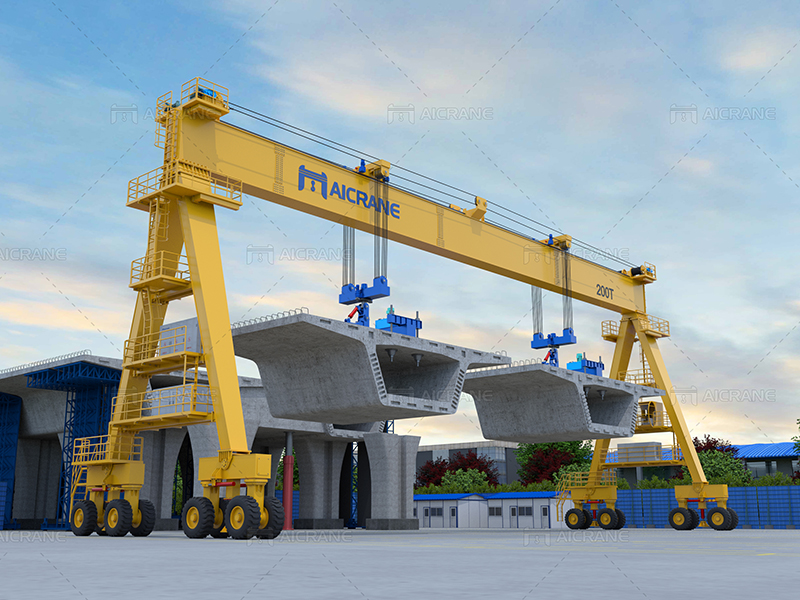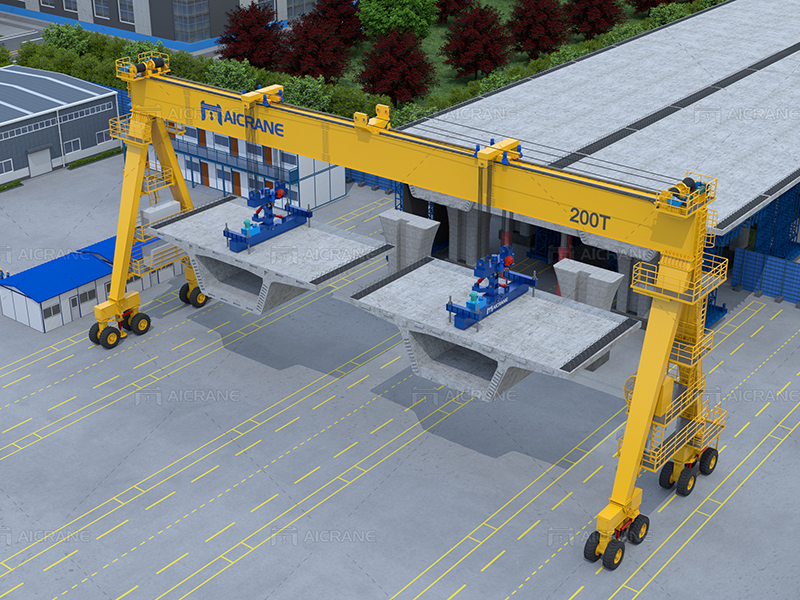When embarking on a bridge construction project, one of the crucial elements to consider is the installation of a gantry crane. Gantry cranes play a pivotal role in the construction process, aiding in the movement and placement of heavy materials. However, installing a bridge construction gantry crane is a complex task that requires careful planning and consideration of various factors to ensure efficiency, safety, and optimal functionality. In this article, we will delve into the key considerations that must be taken into account when installing a gantry crane for bridge construction.

Weight and Capacity Requirements:
The first and foremost consideration is the weight and capacity requirements of the gantry crane. Understanding the maximum load that the crane will be required to lift and move is crucial for selecting an appropriately sized and rated gantry crane. This information is essential for the structural design of the bridge construction crane, ensuring that it can handle the specific demands of the bridge construction project.
Span and Clearance:
The span of the gantry crane, which refers to the distance between the supporting columns or legs, must be carefully determined based on the width of the bridge being constructed. Additionally, the clearance height beneath the gantry crane is crucial to allow for the movement of materials and equipment underneath. Striking the right balance between span and clearance is essential to ensure optimal functionality without compromising the structural integrity of the crane.
Site Conditions and Geotechnical Considerations:
The site conditions play a vital role in determining the type of foundation required for the gantry crane. Conducting a thorough geotechnical analysis of the construction site helps identify factors such as soil bearing capacity, potential settlement, and other geological considerations. This information is vital for designing a stable foundation that can support the gantry crane and withstand the loads imposed during bridge construction.
Environmental Factors:
Environmental factors, such as wind speed, temperature variations, and seismic activity, must be taken into account during the gantry crane installation. Wind load calculations are crucial to ensure the stability of the crane during adverse weather conditions, and seismic considerations are essential for regions prone to earthquakes. Adhering to local building codes and regulations related to environmental factors is imperative to guarantee the safety and reliability of the gantry crane.

Accessibility and Site Layout:
The layout of the construction site and the accessibility of the gantry crane are critical considerations. The crane for construction must be strategically positioned to allow for efficient material handling and minimize downtime. Accessibility for maintenance and repairs should also be taken into account during the installation process to ensure the long-term reliability of the gantry crane.
Power Supply and Control Systems:
The power supply requirements for the gantry crane, including voltage and phase, must be carefully assessed and provided for during the installation process. Additionally, the control systems, including the type of control (manual, semi-automatic, or fully automated), must be selected based on the operational needs of the bridge construction project. Proper integration of control systems is essential for safe and precise crane operation.
Safety Measures and Regulations:
Safety is of paramount importance in any construction project, and gantry crane installations are no exception. Strict adherence to safety regulations and guidelines is mandatory. This includes the use of safety features such as overload protection, emergency braking systems, and safety barriers. Proper training of personnel involved in crane operation is also crucial to prevent accidents and ensure a secure working environment.
Maintenance and Lifecycle Costs:
Considering the long-term maintenance requirements and associated lifecycle costs is essential for the economic viability of the gantry crane. Choosing materials that resist corrosion, implementing a regular maintenance schedule, and having access to spare parts are key factors that contribute to the extended lifespan of the crane. Assessing the overall lifecycle costs helps in making informed decisions regarding the initial investment and ongoing operational expenses.
Conclusion:
Installing a gantry crane for bridge construction is a complex task that demands meticulous planning and consideration of various factors. By carefully assessing weight and capacity requirements, span and clearance, site conditions, environmental factors, accessibility, power supply, safety measures, and maintenance costs, construction professionals can ensure the successful installation and operation of a gantry crane. A well-planned gantry crane installation not only enhances the efficiency of the bridge construction process but also contributes to the overall safety and success of the project. To learn more about cranes, visit https://steelmillcranes.com/